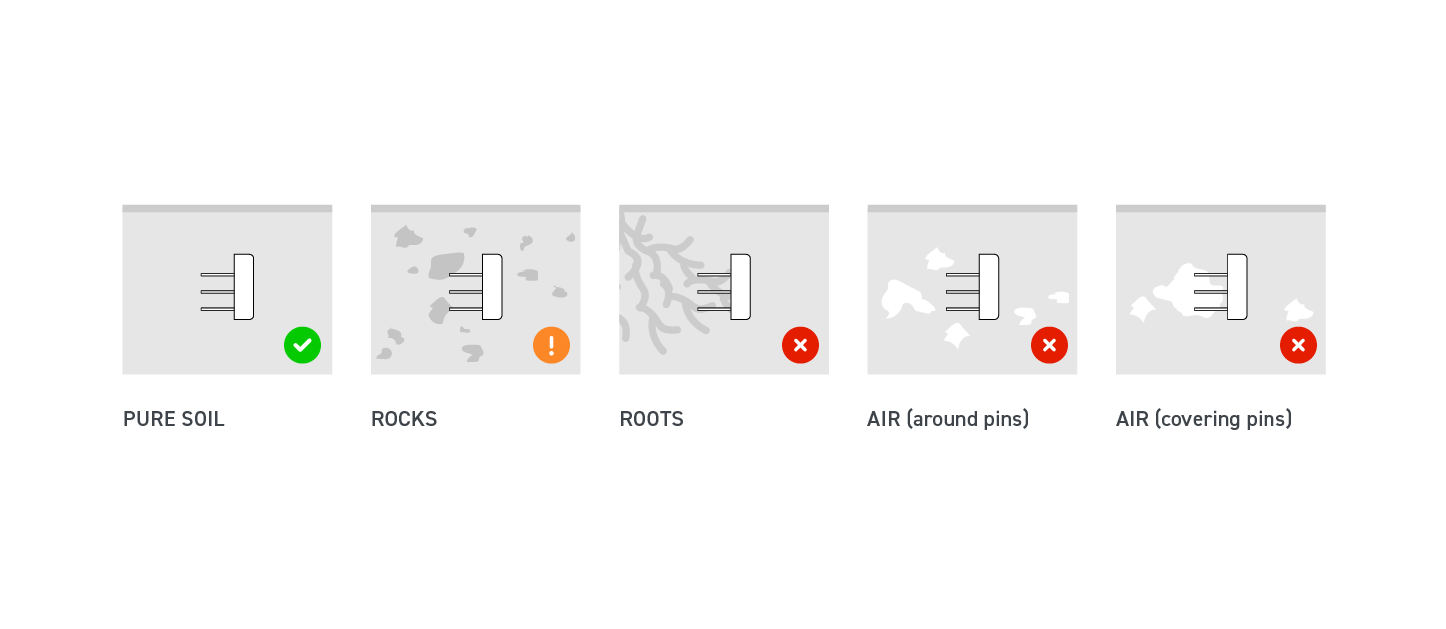Best practice for moisture sensor placement in soil or substrate.
The values measured by the sensors are dependent on how they are installed.
Even if the sensors are installed in the same soil type, they will show slightly different measurements. The soil will absorb a similar amount of water, but the sensor's measurement will be affected by the surrounding rocks, roots, and air.
This is why we recommend you to use a system of sensors, rather than relying on a single data point.
As soon as you have installed the sensors, they will send reliable data. However, there may be some subtle changes over time as the soil settles back to its normal density after the disturbance. Depending on the soil, and how well it was replaced, there may also be some preferential water flow.
To minimize the sensor error in soil and slab/substrate, please follow the instructions below.
When inserting the sensor in slab or substrate:
- Do not squeeze the substrate block
- Limit as much as possible sensor position modification
- Try to saturate the substrate entirely before setting up the sensor
- Use a plastic template to place sensors in the same way between blocks/slabs
When installing the sensor in soil:

- Smallest hole possible with less disturbance possible of the native soil density
- Install the sensor in the soil wall that is undisturbed by compaction or digging
- If you are installing the sensor in rocky soil, please be careful not to bend the sensor needles.
- No roots and air gaps in direct contact with the sensor needles for better accuracy
- No twisting of the sensor during insertion: just plug firmly the sensor in the soil in one movement.
- Do not repack the soil too loose or too firmly to prevent water from flowing deeper in the ground than usual.
- Hold the ferrite core and the cable outside the hole during the installation process.
- Keep ground horizon: repack the borehole with the same layering as the natural profile.
- If rodents or machines are an issue, a cable protection can be added. It should be filled with bentonite to prevent water from flowing in the cable protection. Ground should be repacked firmly around the cable protection.
Spending extra time to get your installation right increases accuracy and pays in saved time, effort, and money.
Need help? Get in touch with us.